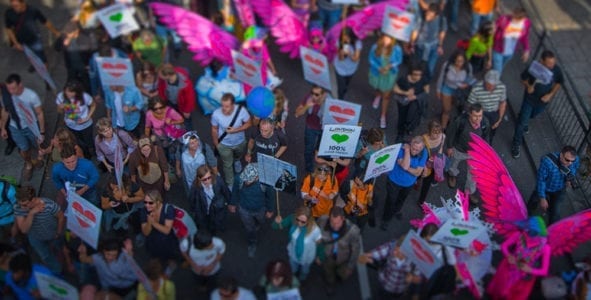Alternatives to Resistance? Comparing Depoliticisation in Two British Environmental Movement Scenes
Journal Paper by Joost de Moor
International Journal of Urban and Regional Research | Published: January 2020

Summary
Processes of politicisation and depoliticisation are increasingly studied in relation to urban contexts, and cities have been depicted as incubators of social movements. What has been largely ignored is why, in some cities, forces of politicisation or depoliticisation are stronger than in others. To address this question, this article compares two British cities—Manchester and Bristol—which have historically been central hubs of environmental resistance, but currently face similar depoliticising forces: austerity, anti‐squatting laws, police repression and activists’ disillusion with environmentalism. Curiously, these conditions have had very different impacts on the two environmental scenes. In Manchester they have caused environmental resistance to become replaced almost entirely by non‐confrontational ‘alternatives’. In Bristol alternatives have emerged that tend to be in synergy with environmental resistance. The comparison thus suggests that Bristol is more conducive to maintaining environmental resistance under depoliticising conditions. Findings suggest that differences can be attributed to features of the physical urban environment, including city size. Historically, these differences were not decisive. Yet, after a period of dwindling environmentalist energy in the UK, the number of environmentalist hubs has been reduced. This has prompted a reputational snowball that increasingly concentrates environmental resistance in the one city that best insulates the environmental movement from broader depoliticising forces.
Link
The article is available in open access format on the Wiley Online Library website. If you have difficulties accessing the paper, please get in touch: info@cusp.ac.uk.
Citation
De Moor J 2020. Alternatives to Resistance? Comparing Depoliticisation in Two British Environmental Movement Scenes. In: International Journal of Urban and Regional Research, 44/1; pp 124-144. DOI: doi.org/10.1111/1468-2427.12860



